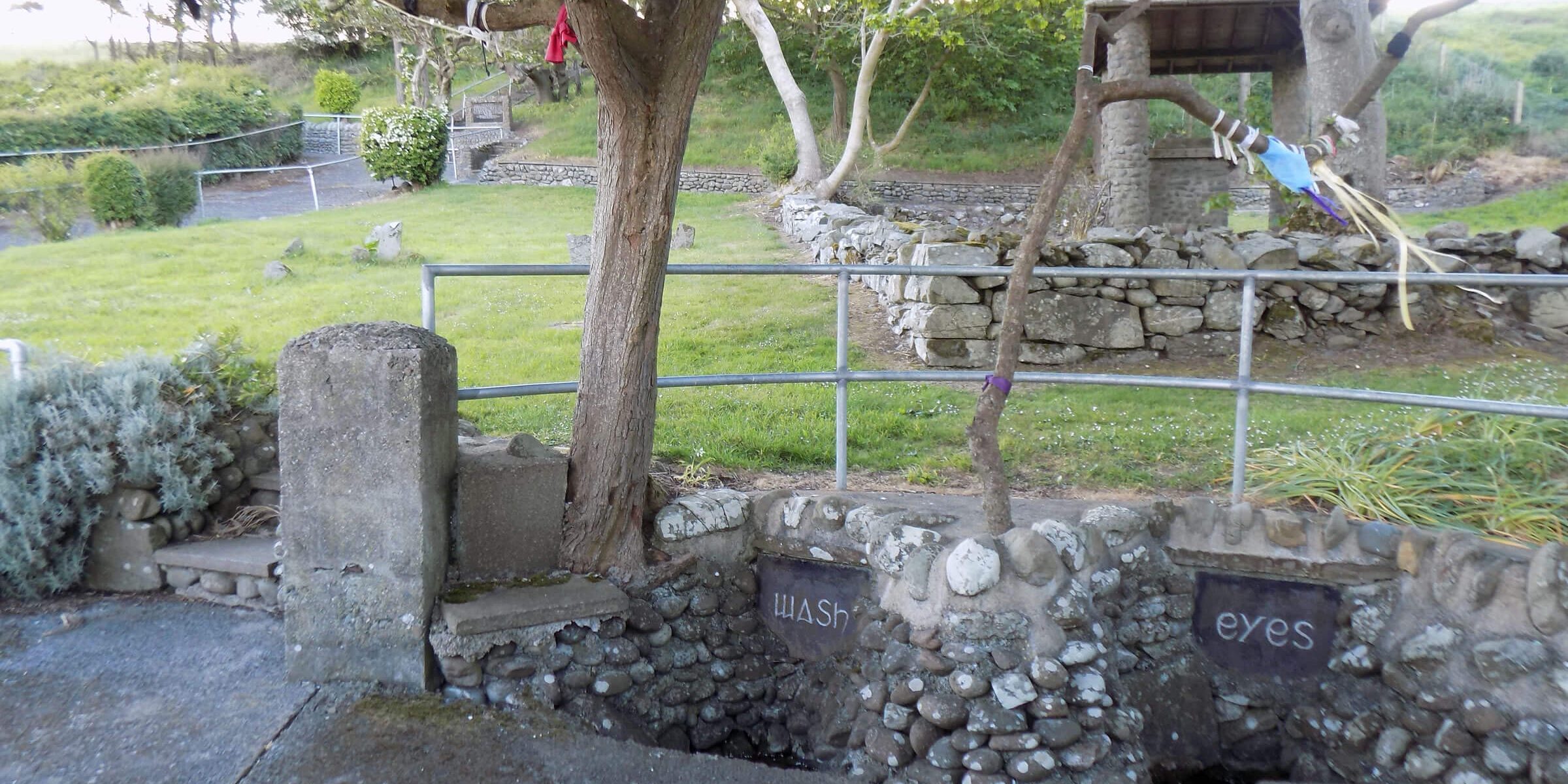Templecooey is a peaceful, spiritual place on the outer Ards coastline. It is named after St Cooey who is associated with the local area and who was known by various names including St Mochaoi. He established a church at Templecooey.
St Cooey’s Wells at Templecooey are located approximately three miles south east of Portaferry and about the same distance south from the National Trust village of Kearney. There are three wells each of which is labelled: the south well is ‘Wash’ the middle well is ‘Eyes’ and the north well is ‘Drink’. People came on pilgrimages to the Holy Wells until the end of the 18th Century. Records from the 13th century and later indicate the site was of considerable importance.
It is estimated that there are about 3,000 holy wells in Ireland, the custom of visiting Holy Wells is mentioned in our oldest literature. Many of them are derived from the primitive pre-christian religion of the Celts. If we are to judge by the number and popularity of eye wells, chronic inflammation of the eyes and eye lids must have been very common in Ireland. One reason for this was that a great number of people lived in smoke filled cabins. Other conditions which holy wells are believed to have the power to relieve include backache and sprains. It is the custom to tie a small piece of cloth to the branch of a tree near the well.
Some wells are famous for their power to relieve headaches, the water is believed to cure the headache. There are many wells at which people pray for children. Other conditions which may be helped backache, toothache, sprains , wounds, and rheumatism.
Trees at wells
Sacred and special trees have always been important in the social and religious life of the Irish and in our oldest records there are references to these special trees. Trees were honoured as part of the ancient Celtic religion and this has continued until the present day.
The custom of leaving an offering is an essential part of a pilgrimage to a holy well. This has been a practice for hundreds of years and may go back to Celtic times. The most usual objects left by pilgrims were small pieces of cloth which were hung on the saint’s tree near the well. Red was considered a magical colour in Celtic culture so you will see small pieces of red cloth but also cloths of many other colours.
Red is a colour which is much used for all kinds of magical purposes. The use of red flannel in folk medicine is an example of the very ancient belief in the power of red things.
At St Patrick’s wells commonly referred to as Struell Wells in Lecale, the water was used to treat sores on the body. The sores were bathed in the water of the stream which flows from the well- the well water was drunk by the pilgrims- and the cloth used for the bathing was allowed to run off in the stream.
Things left as offerings were simple personal possessions, coins, brooches. Crutches and sticks have often been left at holy wells by grateful pilgrims who no longer needed them.
In 1977 the site at Templecooey was improved with better access, the provision of a carpark and access for wheelchairs.
In springtime the hedgerows around the site and in the wider are ablaze with the golden colour of the gorse and you might even see some rare birds like the curlew if you walk along the ancient pathway to the coast. The path leads to the site of a penitential stone on which St Cooey is reputed to have knelt in penance. Even if you have no belief in the healing powers of holy wells this is a beautiful, tranquil place to visit and it will be a restorative experience.





